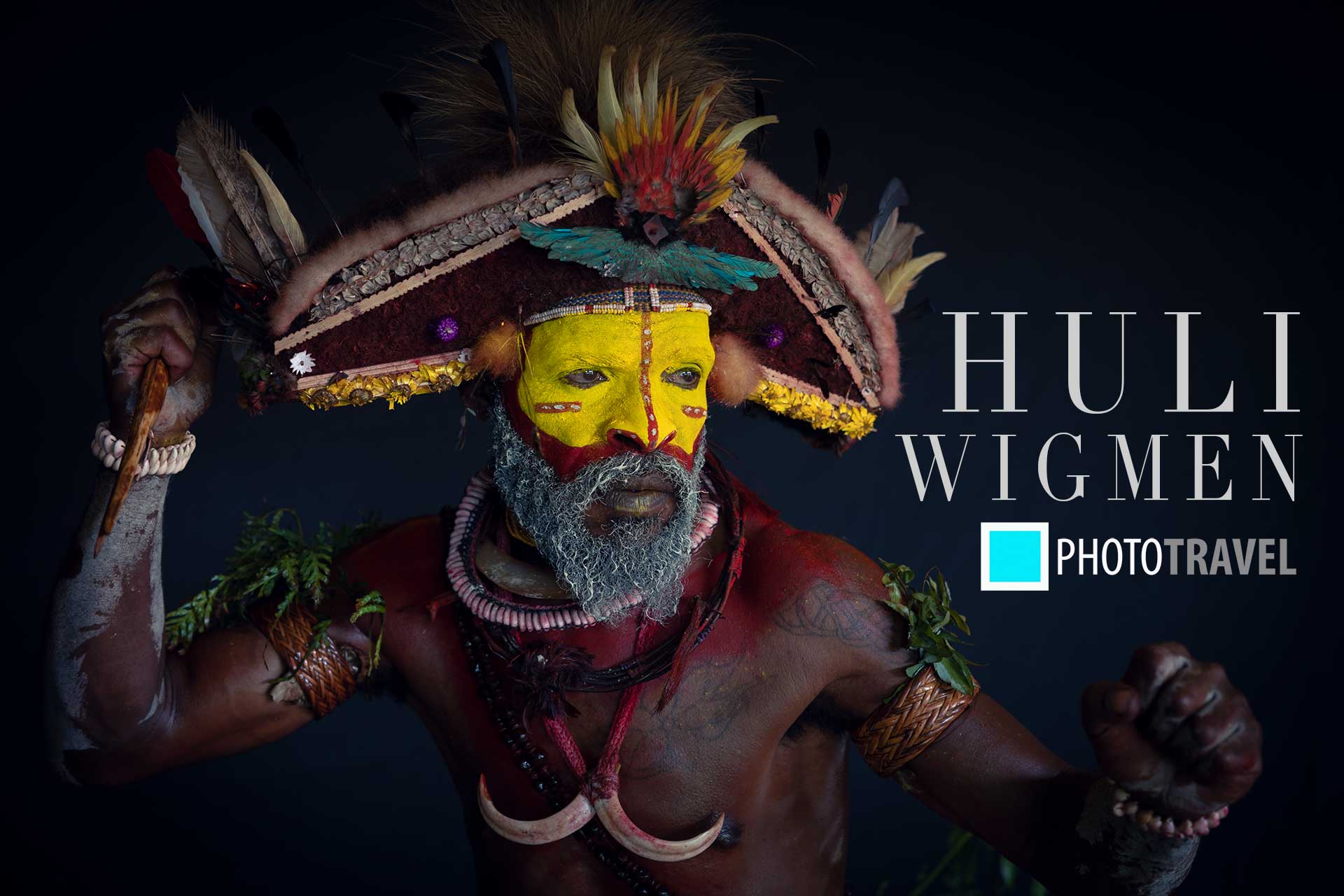
Huli Wigmen Tribe of Papua New Guinea
The Huli Wigmen are an indigenous tribe from the southern highlands of Papua New Guinea, known for their spectacular dances and elaborate head ornaments made of human hair, known as wigmen. This tribe has maintained its customs and traditions for centuries, becoming a symbol of the rich cultural diversity of the region.
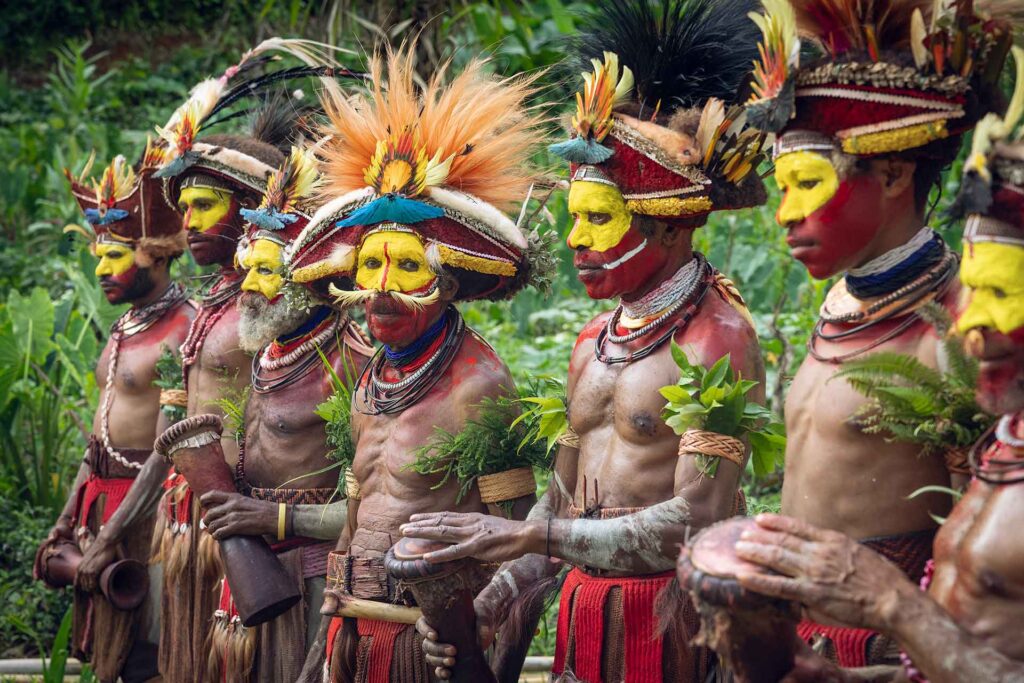
- Her impressive headdresses
- Huli men are famous for their wigmen, headdresses made from human hair that they themselves grow and model with great care. These headdresses, adorned with bird of paradise feathers, are status symbols and are used in important ceremonies.
- Young Huli go through a long training process to become wigmen, which includes initiation rituals and the creation of their own headdresses.
- Hair care is a deeply ritualized practice, especially among young men. This process is intrinsically linked to spirituality and tradition, with the active participation of a shaman or “haroli”, who guides and supervises these practices.
- Each headdress is not only a work of art, but also symbolizes power and connection with the spirits of nature. Headdresses are used in ceremonies and rituals, and their making is considered a sacred act.
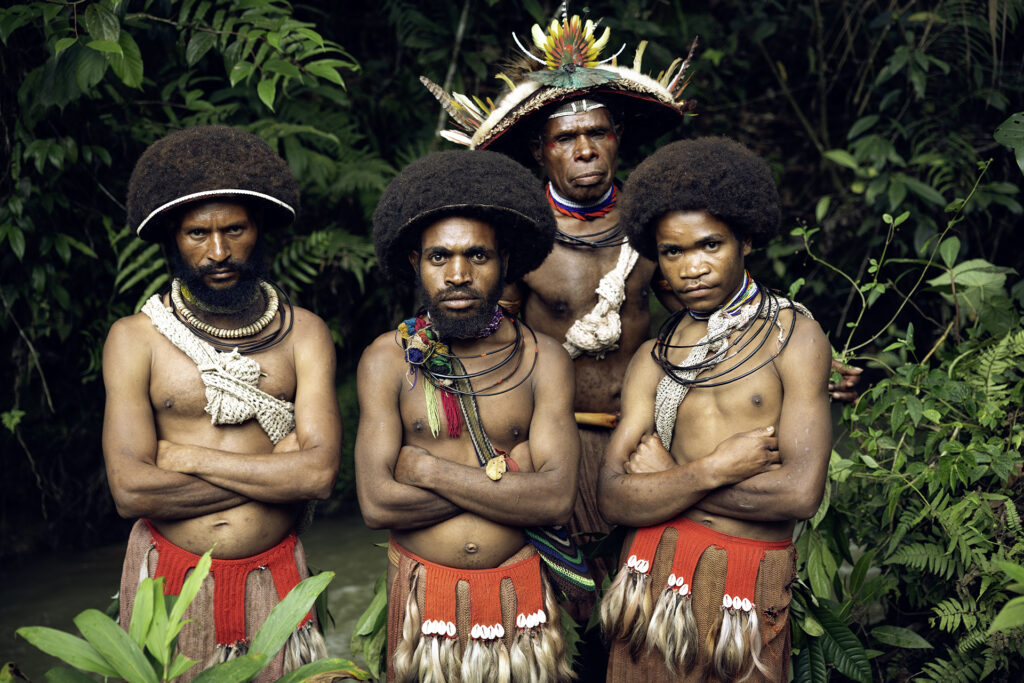
- Headdress Creation Process
- Once the hair has grown long enough, the young man shaves his head, and the collected hair is used to make the iconic feather headdresses, known as “wigs”. These headdresses are a sign of maturity and status within the Huli community, and their creation is a sacred process.
- The collected hair is mixed with other materials such as feathers of birds of paradise and meticulously worked under the direction of the shaman. The end result is a headdress that represents not only the young man’s skill, but also his connection to the Huli tradition.
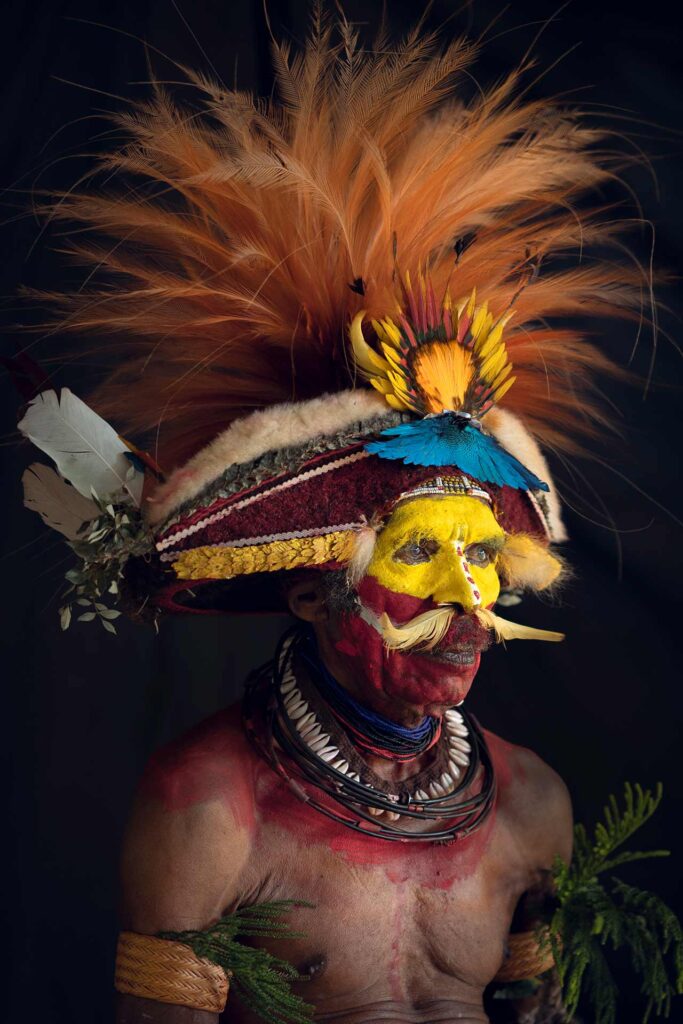
- Body Painting
- Huli Wigmen are also known for their elaborate face paintings, in which they mainly use bright colors such as yellow, red, and white. Not only do these paintings have a decorative function, but they are also imbued with spiritual and social meanings. Patterns and colors can vary depending on the occasion, mood, or purpose of the ritual.
- Face paint is an expression of Huli identity and a means of invoking spiritual protection. During ceremonies, the Huli believe that their ancestors are present, guiding and protecting them.
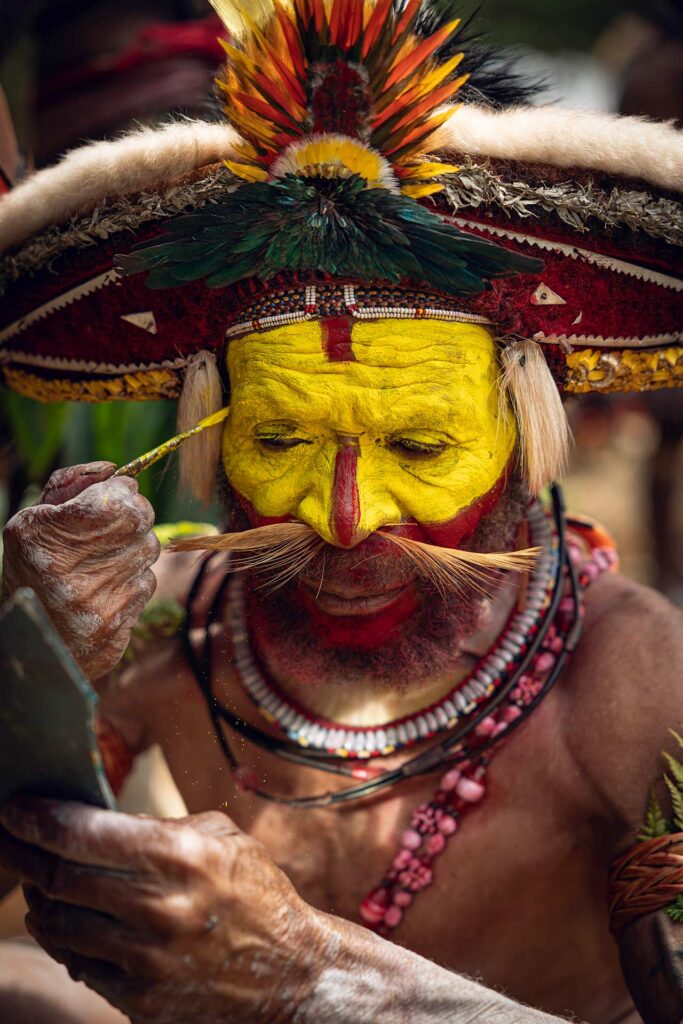
- Social Life and Structure
- Huli society is organized into clans, and disputes between clans have historically been common, with wars and alliances forming part of their social dynamics.
- The Huli houses are organized into small family groups within an enclosure called an “anda” that is usually fenced off. Each compound has several houses, including a main house for the men (also used as a longhouse) and separate houses for the women and children.
- The Huli have a clear separation of spaces according to gender, with adult men living in the longhouse and women and children in separate houses. This separation is rooted in their cultural and religious beliefs, where interaction between genders in certain contexts is restricted.
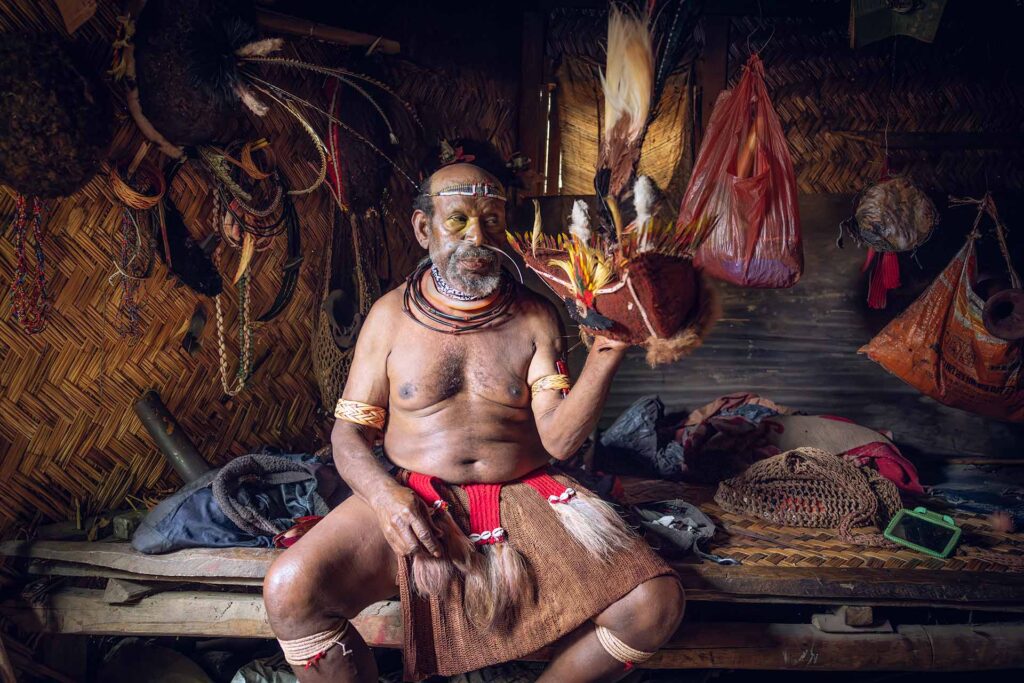
- Huli widows, mourning rituals
- When a Huli man dies, his wife enters a period of mourning that is strictly regulated by tribal customs. During this time, the widow may be subject to a series of rituals that reflect both respect for the deceased and the role of women in Huli society.
- Widows often cover themselves in mud and ashes as a sign of mourning. This act symbolizes the connection to the land and the purification of the spirit after the loss of her husband.
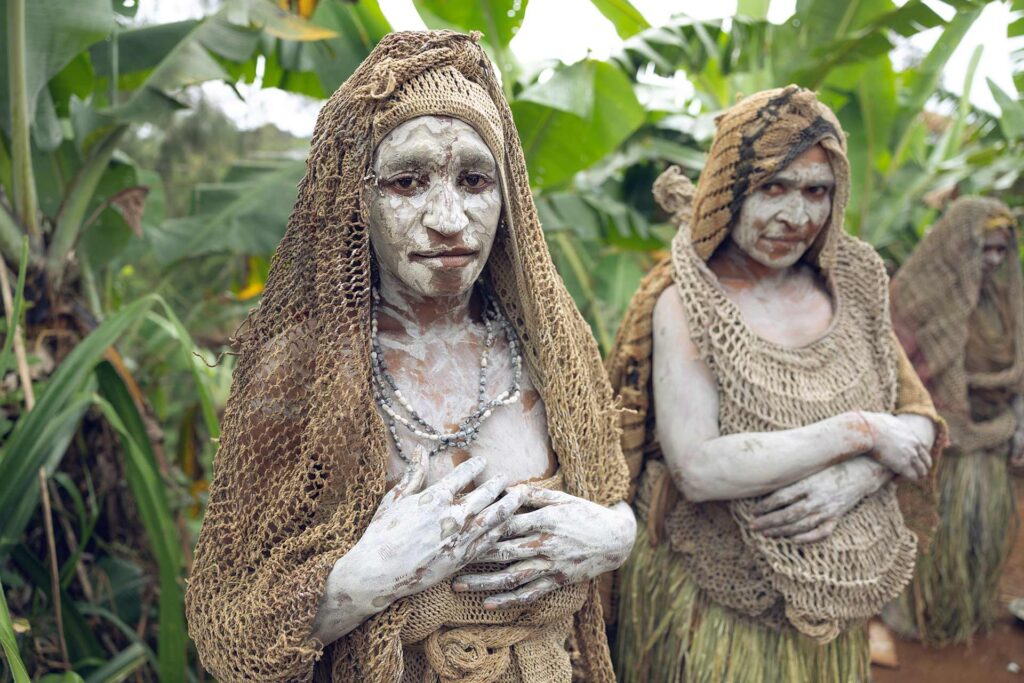
- Isolation and Restrictions
- In many cases, Huli widows are isolated from the community during the mourning period. This isolation can last for weeks or even months, during which the widow must comply with certain taboos, such as the prohibition of participating in normal social life or performing agricultural tasks.
- Widows may also be forced to abstain from certain foods and live in austere conditions, reflecting their state of mourning and need for purification.
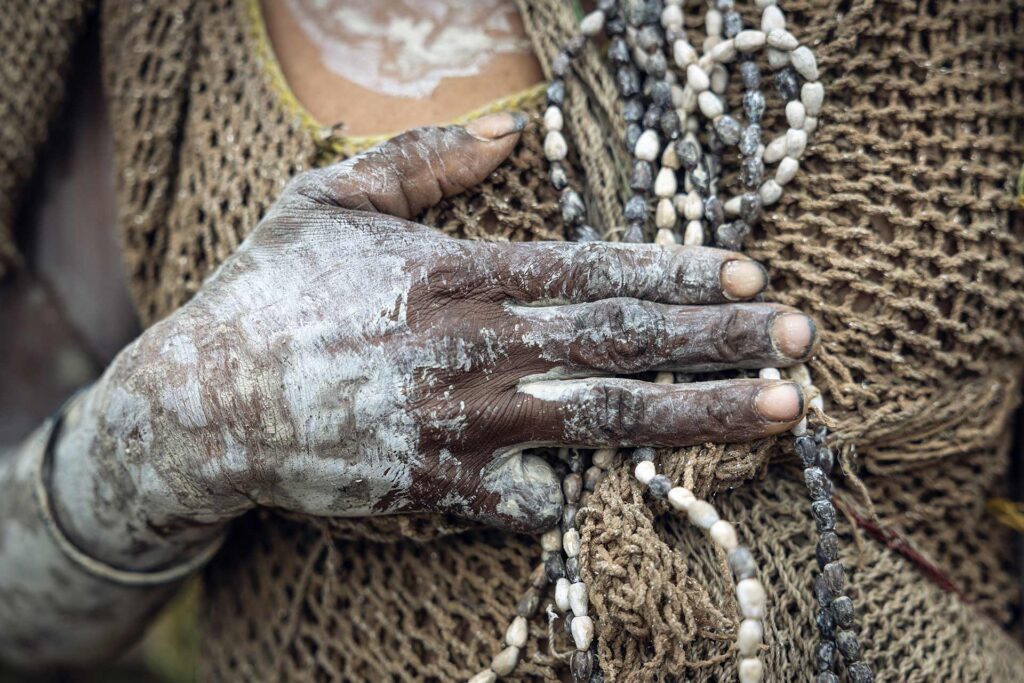
- We can see some Huli widows, with amputations in one or more fingers to show their mourning for the loss of a child.
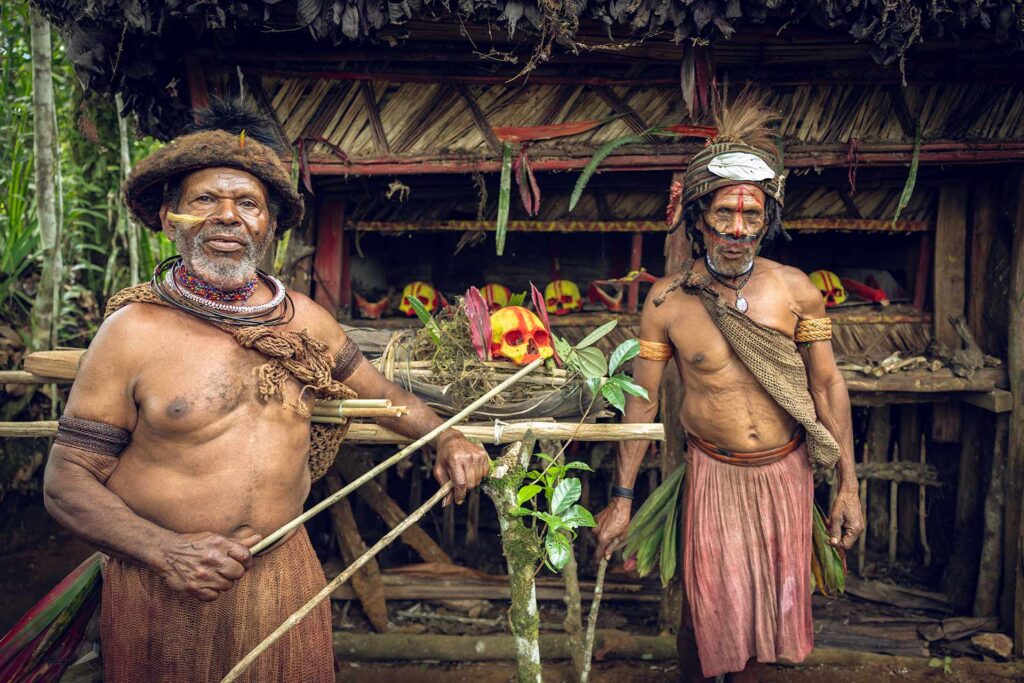
- Huli Shamans
- The Huli Wigmen shamans of Papua New Guinea play a fundamental role in the spiritual and cultural life of this tribe. Its function goes beyond healing; They are the guardians of ancestral rituals, cosmology, and connection with spirits. Shamans, known locally as “haroli,” are deeply integrated into the daily life and ceremonies of the Huli, acting as intermediaries between the physical and spiritual worlds.
- Huli shamans act as bridges between the human world and the ancestral spirits, which are believed to inhabit nature. These spirits, known as “lady,” are considered protectors and guides of the community, and shamans are responsible for maintaining a harmonious relationship with them.
- The dances of the Huli are ceremonial and are closely linked to their spiritual life. These dances, accompanied by singing and the sound of drums, are used to celebrate important events, such as the initiation of young people and peace between clans.
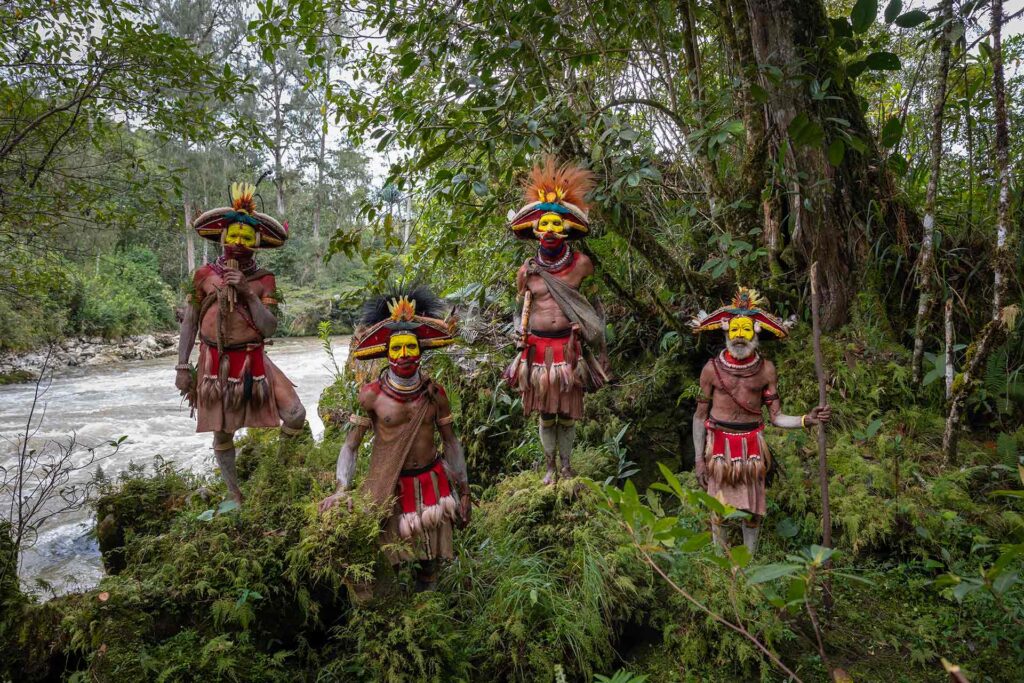
Over time, the Huli tribe has faced challenges due to the influence of the modern world, including social and economic changes that affect their traditional way of life. However, the community continues to strive to preserve its customs and transmit them to the new generations, despite the increasing external pressures of evangelization.
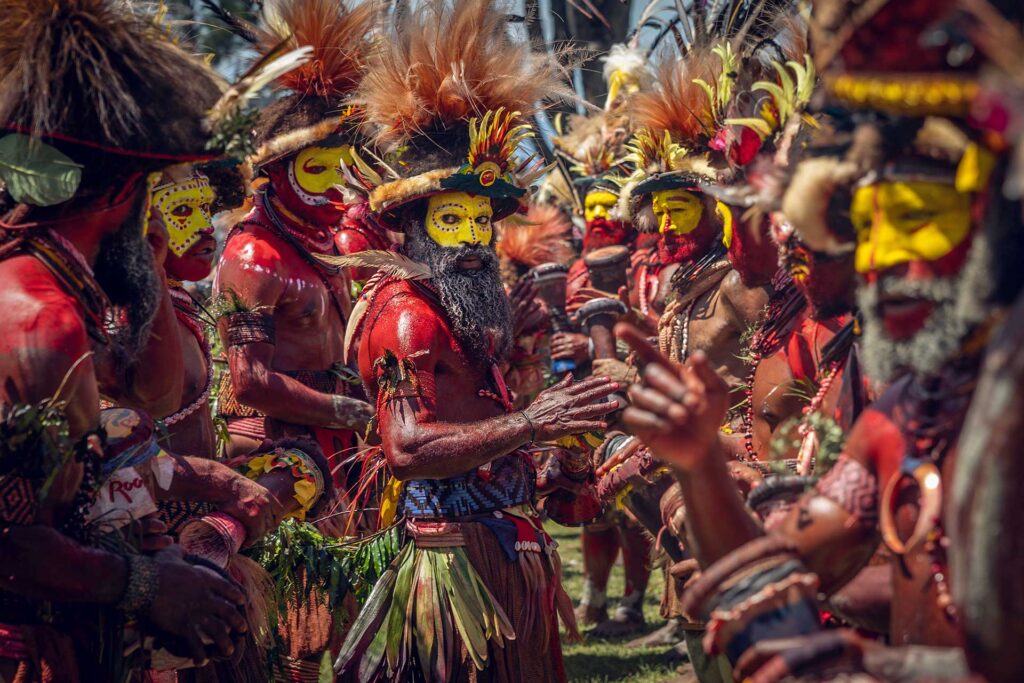
The Huli Wigmen tribe of Papua New Guinea is an impressive example of how indigenous communities can maintain their cultural identity in a rapidly changing world. Their traditions, which include the elaboration of unique headdresses and complex rituals, offer a fascinating window into a way of life that has endured over the centuries.
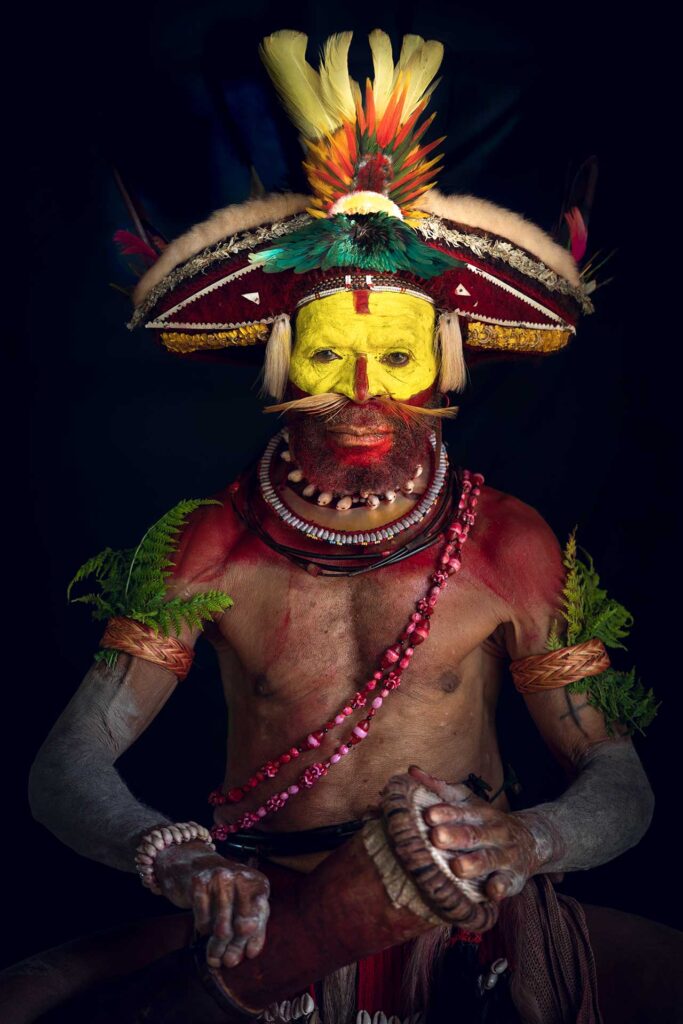
0


